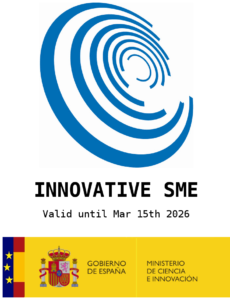Authors: A. Montoya, C. March, Y.J. Montagut, M.J. Moreno, J.J. Manclús, A. Arnau, Y. Jiménez, M. Jaramillo, P.A. Marín, R.A. Torres.
Event: International Work-Conference on Bioinformatics and Biomedical Engineering, IWBBIO 2015, Granada (Spain), April 15-17, 2015. (2015)
Tuberculosis is one of the oldest diseases affecting human beings and at present it is still considered as a world public health problem, both in developing and in developed countries. Consequently, the World Health Organization encourages the development of new and more powerful analytical methods able to sensitively detect tuberculosis biomarkers in order to provide early diagnosis and treatment.
Taking advantage of the most recent advances in new detection technologies, such as biosensors and particularly immunosensors, in the present paper we describe the development of a High Fundamental Frequency (HFF) piezoelectric immunosensor for the sensitive detection of tuberculosis. First, a secretion protein (38 kDa) from Mycobacterium tuberculosis was selected as the tuberculosis biomarker. Next, high affinity monoclonal antibodies (MAbs) specific to the target analyte were obtained. To this purpose, a recombinant form of the 38 kDa protein was used as immunizing antigen and hybridoma technology was subsequently applied for antibody production. The best MAb (namely Myc-31) was employed as the primary immunoreagent for the development of an enzyme-linked immunosorbent assay (ELISA) for 38 kDa quantification. This ELISA reached a detection limit as low as 0.014 μg mL-1 of the 38 kDa antigen and was used as a previous diagnostic test and reference assay for the future biosensor.
Finally, the HFF piezoelectric immunosensor for 38 kDa detection and quantification was developed. High fundamental frequency (100 MHz) quartz crystals were used as the transducer elements of the biosensor. Crystals were functionalized by covalent immobilization of the 38 kDa antigen onto the gold electrode surface of the quartz crystal. Mixed self-assembled monolayers (mSAM) of alkane- thiols and acids were used as intermediate layers for immobilization. A monoclonal antibody-based competitive immunoassay was then integrated as the sensing specific bio-recognition event coupled to the transducer. With this aim, the concentration of the 38 kDa antigen for immobilization and the limiting amount of the MAb for the competitive assay were previously optimized. All immunosensor assays were performed in the AWS A10 platform developed by AWSensors. As expected for HFF piezoelectric transducers, high and stable assay signals were obtained using very low protein concentrations for crystal functionalization (20 μg mL-1 of the 38 kDa antigen) and for the competitive immunoassay (0.75 μg mL-1 of Myc-31 MAb).
Under these conditions, the HFF immunosensor calibration curve for the determination of the 38 kDa antigen was performed by assaying different biomarker concentrations in the [ng mL-1 – mg mL-1] range. Each assay cycle took around 25 min including regeneration of the functionalized sensor surface between assays.
Regeneration was achieved by treatment with 0.01 M HCl. Figure 1 depicts the average 38 kDa standard curve obtained from several experiments using different 100 MHz crystals. It shows the typical decreasing sigmoidal shape associated to competitive assays.

Figure 1: Calibration curve of the HFF piezoelectric immunosensor for the 38 kDa biomarker
The IC50 value of the competitive standard curve (analyte concentration producing a 50% inhibition of the maximum assay signal, which is in turn considered as an estimate of the assay sensitivity in immunoassays) was 0.080 μg mL-1 of the 38 kDa antigen. The limit of detection of the HFF immunosensor (calculated as the analyte concentration providing a 10% inhibition of the maximum assay signal) was around 0.011 μg mL-1 of the 38 kDa biomarker, even lower than that of the previously developed ELISA. The high detectability attained by this immunosensor, in the picomolar range, makes it a very promising tool for the easy, direct and sensitive detection of the tuberculosis biomarker in biological fluids such as sputum.
Keywords: 38 kDa tuberculosis biomarker; Monoclonal antibody; ELISA; High Fundamental Frequency (HFF); Piezoelectric Immunosensor.



